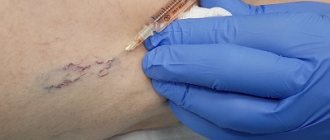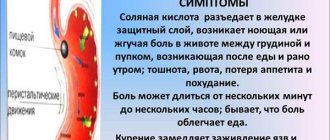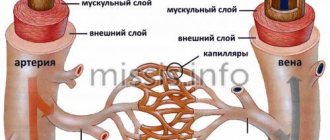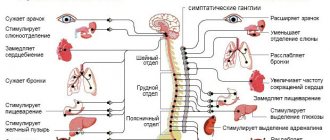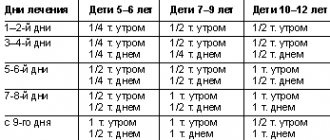Cramps are involuntary muscle contractions that cause spasms. Such manifestations occur suddenly, do not last long, and may recur periodically. They often cause severe pain, especially in the elderly and children. Most often, cramps appear in the lower extremities, thigh muscles, and calves. The neck, back, hands, and abdomen are susceptible to these painful manifestations. Spasms of internal organs are quite rare. With regular repetitions, convulsive syndrome is diagnosed.
Types of seizures
All categories of people can experience seizures, regardless of age and lifestyle; they appear more often in the elderly and young children. Attacks are manifested by unequal painful muscle contractions and have different durations, mechanisms of development and frequency of occurrence. They are classified according to several criteria.
By locality
Depending on whether one muscle or a group of them is seized by a spasm, spasms are divided into:
- unilateral – when pain occurs on one side;
- focal (local) - appear in one muscle group;
- generalized - affect the whole body, causing involuntary urination, loss of consciousness and even respiratory arrest.
By duration of exposure
Classified into:
- myoclonic - short-term contractions or twitches, mainly in the upper part of the body, stop quickly and do not cause pain;
- clonic - characterized by a longer duration, muscles contract rhythmically, can be of a local or general type, sometimes contribute to stuttering;
- tonic – long-term, can occur in any part of the body, affect the respiratory tract, the part of the body seized by a convulsion takes one forced position, can lead to loss of consciousness;
- tonic-clonic - in which tonic spasms turn into clonic; if the second type predominates, they are called clono-tonic.
Types of seizure activity
Convulsive muscle contractions can have different manifestations. There are:
- tonic;
- clonic;
- focal;
- generalized;
- febrile seizures.
A tonic spasm is characterized by the intensity and duration of muscle tissue tension.
Clonic spasm occurs according to the following scheme: short-term tension - relaxation - pulsation. The cycle can be repeated until the attack ends.
Focal seizures are localized to a specific area, while generalized seizures involve several muscle groups. As a result, short-term paralysis may even develop.
Febrile spasms appear during flu or colds, due to increased body temperature, as a side effect of fever. Convulsive activity disappears over time as the disease recedes. If convulsions occur at a temperature higher than 38-39 degrees, this may indicate a significant deterioration in the patient’s condition. In turn, non-febrile seizures develop due to temporary disorders of brain functioning.
Convulsions during sleep are a separate group of disorders. During night cramps, the patient experiences increased brain activity, during which time he dreams. In children, night cramps may be accompanied by involuntary urination.
Generalized seizures with convulsive manifestations throughout the body are the most dangerous for a person - he completely loses control over his body, his consciousness turns off.
Causes of seizures
There are several factors that influence the occurrence of seizures.
Occupational activities - People whose jobs involve standing in a single position all the time (salespeople, computer operators, etc.) or who are exposed to repetitive physical stress experience cramps at night or in the evening. People who smoke experience muscle cramps 5 times more often; the leading causes of cramps are smoking or extremely frequent drinking of coffee.
Often night cramps appear after a day spent in constant movement or even an ordinary brisk walk - this becomes the cause of calf cramps. The same result causes unusual significant physical stress. It should be taken into account in advance that it is undesirable to strain one muscle group; physical work should alternate with periodic rest.
Night cramps are much more common because the posture of the sleeping person contributes to this: relaxed and downward-facing feet, bent legs and the body turned on its side. This position shortens the calf muscle and helps cause spasms. Night leg cramps occur in athletes after significant daytime stress, children (especially with fever) and the elderly due to circulatory disorders in the extremities.
Severe cramps are not uncommon when swimming in cool water on a hot day. Temperature changes can also cause spasms in the pool: heated muscles contract sharply with sudden changes in the environment.
Cramps also appear as a result of severe dehydration, especially in those who engage in sports training or heavy physical labor in the hot season.
Stressful conditions can cause convulsions, and the effect does not occur immediately, but after a while, when calcium is redistributed in the body due to an excess of the hormone cortisol.
Spasms of the fibers of the foot muscles can appear as a result of wearing tight shoes or high loads with flat feet.
Another reason that leads to cramps in the arms and legs is the uncontrolled use of statins, dauretics, antibiotics and other drugs that redistribute or remove microelements from the body. Drug treatment of seizures is carried out with mandatory monitoring of the biochemical composition of the blood.
Leg cramps during pregnancy
Pregnancy is a happy and challenging time. When hormonal changes occur, weight gain and decreased activity. A woman develops varicose veins.
Muscle spasms should be given special attention because they are an anxiety disorder. Cramps indicate a lack of microelements, excess fluid loss (for example, a period of toxicosis). The increasing size of the uterus can put pressure on the inferior vein. At the first manifestations of cramps, you should immediately go to the doctor so that a specialist can identify and help eliminate the cause of night cramps as soon as possible.
Diseases and consequences
In addition to circumstances related to lifestyle or specific events, the muscular system may be subject to cramps due to the presence of a specific disease, to identify which it is necessary to seek help from medical institutions for examinations, tests and treatment.
Spasms can be symptoms of unrelated diseases. We can say that leg and arm cramps differ from spasms that occur in smooth muscle fibers and cause pain inside the body, which most often indicate diseases that require regular treatment.
If we characterize the main diseases leading to seizures, their list will look like this:
- epilepsy and concomitant epileptic seizures cannot do without muscle cramps;
- opisthotonus, better known as tetanus, is necessarily accompanied by severe spasms;
- there is such a thing as psychogenic convulsions, characteristic of hysterical neuroses and other neurotic conditions;
- inorganic and organic poisons also cause involuntary contractions of muscle tissue;
- The most common factor leading to severe muscle tension is an excess or deficiency of microelements such as magnesium, potassium and others.
Improper distribution of microelements is caused by various reasons. Failure of the endocrine system requires serious treatment prescribed by a doctor, and metabolic disorders caused by other reasons can be corrected with medications.
Diagnostics
Finding out on your own why your legs are cramping does not lead to a positive result. To establish a diagnosis, you should see a doctor. During your appointment, your specialist will find out the following:
- When my legs started to cramp at night.
- What preceded these symptoms?
- Presence of concomitant pathologies.
- Does the patient engage in sports, including physical training?
- Spasms are acute or mild.
- How often he cramps and twists his legs at night.
What to do if you have seizures
Muscle contractions that are not associated with serious illness do not require specialized treatment, but the pain they cause does need to be addressed. Therefore, there are simple methods that have proven their effectiveness:
- massaging or shocking frozen muscles;
- elimination of spasm with an injection of a regular needle;
- massage stiff calf muscles - pull your big toes towards you;
- the same group of muscles relaxes with the help of standing stretches - with your hands, reach the fingers of the sore limb resting on the floor surface;
- when the muscles of the front surface of the thighs spasm, the knee bends, and the foot is pulled from behind towards the buttocks.
These methods allow you to get rid of the pain that has arisen, but if it appears quite often, the treatment of seizures should begin with identifying the causes that cause them and prevention.
First aid for relieving an attack
In the first seconds, panic may set in, especially if convulsions have not occurred before. It needs to be controlled. Spasms are not life-threatening and can be eliminated quite simply.
- It is important to relax contracted muscles. To do this, you need to move your legs: lower them from the bed to the floor, rotate your feet.
- To relieve severe pain and restore blood flow, it is recommended to rub and massage your legs with your palms.
- If the attack is very sharp, you can prick the affected area with a pin or pinch with your nails. This will cause a reflexive release of the spasmed muscles. The method helps relieve cramps when in water, when every second is important.
- If the spasm affects the feet, you need to walk on the floor with bare feet. Coolness will help restore nerve impulses. It is recommended to do several exercises: standing, roll from toes to heels and back, take a few steps on the inside, then on the outside of the soles, tuck and straighten your toes.
At home, to relieve pain, it is useful to take a contrast shower, pouring alternately warm and cool water on your feet. After the cramps have subsided, it is useful to lie on your back for a while, using support for your legs above the level of your head.
Magnesium and potassium
Cramps that periodically appear in the feet, legs, and fingers can occur in people who consider themselves to be completely healthy. Treatment of this unpleasant and painful sensation must begin with a review of the lifestyle and nutritional composition.
It is necessary to understand whether there is enough magnesium and potassium in the diet, the lack of which can not only lead to seizures, but also make them permanent. It is these microelements that regulate the functioning of muscle fibers. Hypomagnesemia causes cramps in the legs, arms, back, neck, and tingling of the fingertips. Treatment with drugs for seizures can relieve pain.
Myofascial syndrome - symptoms and treatment
An integrated approach is used in the treatment of myofascial pain. It involves eliminating pathological muscle tension and trigger points.
In case of primary syndrome, a local effect is applied to the affected structures:
- rest and moist hot wrap of the affected muscle;
- application of anti-inflammatory gels and ointments to the area of trigger points;
- ischemic compression (squeezing) of trigger points;
- post-isometric relaxation - relaxation of muscles after volitional tension;
- stretching muscles through exercises, gentle muscle relaxation techniques and relaxing massage;
- using lidocaine patches (local anesthesia);
- trigger point injections.
In case of secondary syndrome, treatment of the underlying disease comes to the fore.
Drug treatments for myofascial pain include:
- NSAIDs—nonsteroidal anti-inflammatory drugs;
- muscle relaxants;
- tricyclic antidepressants.
NSAIDs relieve pain, inflammation and lower body temperature. The mechanism of their action is based on suppressing the activity of substances that participate in the cascade of inflammatory reactions.
For severe pain, low doses of tricyclic antidepressants are prescribed. They reduce muscle pain and have a sedative effect.
Ischemic compression of trigger points is aimed at stopping or significantly reducing muscle tension and reducing pain. The trigger point is compressed with your fingertips and held for 60-90 seconds with a gradual increase in pressure.
Simultaneously with squeezing the trigger point, the affected muscle is stretched. This allows you to reduce the time of the procedure: the more the muscle is stretched, the more it relaxes, hypertonicity is relieved, and pain relief occurs faster.
Trigger point injections are sometimes performed with bupivacaine, etidocaine, lidocaine, saline, or water for injection combined with passive muscle stretching and/or coolant spray over the trigger point and area of referred pain [13][14][15][16][ 17]. All this is done for local anesthesia. In some cases, a “dry” puncture is performed - an injection into the trigger point without the introduction of any substance [16][17].
Botulinum toxin type A, injected into trigger points, reduces muscle spasm for 3-6 months [18][19][20][21][22][23]. It inhibits the release of the neurotransmitter acetylcholine, which mediates neuromuscular transmission.
The effectiveness of injection therapy with botulinum toxin type A in combination with physiotherapy was confirmed by a retrospective study by Spanish scientists. During the experiment, medical records of 301 patients with persistent myofascial pain syndrome were studied. Scientists found that after 6 months, as a result of this combined treatment, pain decreased in 58.1% of patients, including 82.9% of patients with primary myofascial pain syndrome and 54.9% of patients with secondary syndrome [23].
Complications associated with trigger point injections are rare and depend on the area of injection. They include pain at the injection site, bleeding, bruising, intramuscular hematoma formation, infection, damage to nerve or vascular trunks.
Local therapy in the form of an anesthetic patch relieves myofascial pain and does not cause discomfort, unlike injection techniques. This conclusion was made by scientists from Italy during a randomized controlled trial [24].
The patients who took part in the experiment were divided into three groups of 20 people: the first group was treated for 4 days with a lidocaine patch glued to the trigger point; the second group received a placebo patch; and the third group received injections of 0.5% bupivacaine hydrochloride.
The researchers found that in the first and third groups, subjective symptoms decreased significantly and the pain threshold increased. Moreover, the effectiveness of therapy was higher in patients of the third group, who received anesthetic injections, but they experienced more discomfort from the treatment than patients from the first group.
The patch is used only once a day. It is glued to dry, intact skin in the area of pain for no more than half a day, after which a break is taken for at least 12 hours. Before gluing the patch, the hair on the skin should be cut with scissors, not shaved.
No more than three patches can be used at a time. If necessary, the patch can be cut into pieces, but only before removing the protective film. The removed patch should not be reused.
It is important to regularly evaluate the effectiveness of such local therapy. This will determine the optimal number of patches that can be used at once to cover the area of pain or to increase the time between applications.
After 2-4 weeks from the start of treatment, the effectiveness of the applications should be re-evaluated. If during this time the response to therapy was insufficient or the therapeutic effect is determined only by the protective properties of the patch, treatment should be discontinued.
Other effective procedures that reduce pain , according to research, include phonophoresis [25][26], massage and exercise [34], stretching (work with an instructor), ultrasound [30], electroacupuncture, electrical nerve stimulation [28][29 ], a combination of the above methods [25] and EMG-BFB - biofeedback based on the electromyogram [32].
A systematic review by Canadian scientists suggested that electroacupuncture is more effective than transcutaneous electrical nerve stimulation [33]. In electroacupuncture, a needle is inserted into a trigger point and an electrical current is applied. With transcutaneous electrical stimulation, electrodes through which current is supplied are applied to the skin without damaging it.
Acupuncture and manual therapy may also be effective [31][35][36]. But, like any other non-drug treatment, they work differently for each patient.
A study conducted by scientists from Taiwan showed that a self-massage and regular exercise therapy at home improved the results of treatment of myofascial pain and significantly increased the threshold of pain sensitivity when pressure was applied to trigger points [34].
The treatment complex should include exercises for restructuring the non-optimal motor stereotype. They correct postures and movements performed in everyday life and during work.
At the University of Michigan, a study of various massage and manual therapy techniques was conducted, as a result of which a special method of influencing myofascial structures was developed - “ myofascial release ”. This technique involves performing exercises independently, without the help of a doctor or massage therapist, which makes it possible to regulate the degree of pressure on the muscles and their stretching, guided by your own sensations.
Myofascial release can be performed using a variety of tools: foam rollers, hand rollers, latex balls, or other assistive devices. They allow you to relieve excess tension in trigger points, relax muscles and ligaments by influencing the fascia. The result is complete relaxation of one or a group of muscles.
The mechanisms underlying myofascial release are not well understood. Studies attempting to illustrate the effectiveness of this technique are often poorly designed and do not answer questions about how long the procedure should be performed, how much pressure should be applied to the affected muscle, and what type of exercise device is best.
The rehabilitation program involves the use of orthoses: corsets, bandages, special shoes, insoles, etc. Orthopedic insoles, special orthopedic shoes and heel supports, for example, can be useful for correcting leg length.
How to prevent seizures
Measures aimed at eliminating and preventing the occurrence of seizures should include:
- giving up harmful addictions (smoking, excessive consumption of alcohol, coffee, tonic drinks); — sufficient daily fluid intake; — physical education to improve blood circulation; - enriching the body with vitamins and microelements (deficiencies in specific compounds can be identified using tests); - Night cramps can be prevented by a warm bath or shower.
To treat and prevent seizures, purchase a complex containing magnesium as a therapeutic measure. Even if there is no deficiency of this mineral in the body, it acts as an anticonvulsant element that reduces neuromuscular excitability.
Prevention
In order to avoid night and morning cramps in the legs, it is important to remember to follow preventive measures to prevent the occurrence of cramps. They include:
- Maintaining a daily routine. The body needs proper rest and sleep at strictly defined hours;
- A healthy diet, food should include calcium - milk, cottage cheese, cheese, almonds; magnesium - buckwheat porridge, walnuts, legumes; potassium - dried apricots, raisins, beets, sunflower seeds
- As directed by the doctor, follow a diet, abstain from spicy, fatty, excessively sweet and salty dishes and foods;
- Periodic calf massage will improve blood circulation in the legs and relax the muscles;
- Wearing comfortable shoes will allow you to get an even load on the foot, helping to relieve and prevent tension in the muscles.
Magvit is an excellent cure for seizures
One of the most affordable, safe and effective medicines for treating seizures is the drug “Magvit” , produced by the Belarusian pharmaceutical company “Minskintercaps”.
This is the first drug completely developed by domestic pharmacists and has a beneficial effect in the treatment of seizures.
“Magvit” successfully fights both primary and secondary magnesium deficiency, and the pyridoxine (vitamin B6) included in the drug improves the absorption of magnesium into the blood and its absorption at the cellular level.
The combined use of vitamin and magnesium citrate components of the drug is justified by the following clinically proven data:
- magnesium and B6 enhance and complement the pharmacological effects; — the vitamin helps reduce the amount of magnesium excreted from the body and increases its content in red blood cells; - absorption and assimilation of magnesium improves; - Pridoxine, under the influence of magnesium in the human liver, transforms into the active metabolite pyridoxal-5-phosphate.
Which doctor should I contact?
The best place to start fighting leg cramps is at the therapist’s office. He will conduct an initial diagnosis and prescribe the necessary tests. To find out which microelements are missing, a biochemical blood test is performed. A blood sugar test may be ordered.
Another doctor you should definitely visit is a phlebologist. This is a specialist who studies veins. His examination is necessary in order to exclude venous insufficiency and thrombophlebitis, which can also provoke seizures.
You can visit these specialists with us. Doctors at Best Clinic will definitely understand the reasons and develop a further plan of action.
Advantages of Minskintercaps drugs
The company has earned well-deserved fame thanks to the production of inexpensive, high-quality medicines. All drugs comply with the requirements of the GMP standard, and their quality and composition are tested in a chemical and biological laboratory accredited in accordance with the requirements of STB ISO/IEC 17025.
The drugs are created from raw materials supplied by the world's leading companies; production is controlled by Pharmacovigilance and meets the requirements set by the European Parliament.
13 Feb 2018
Previous News Feed Next

